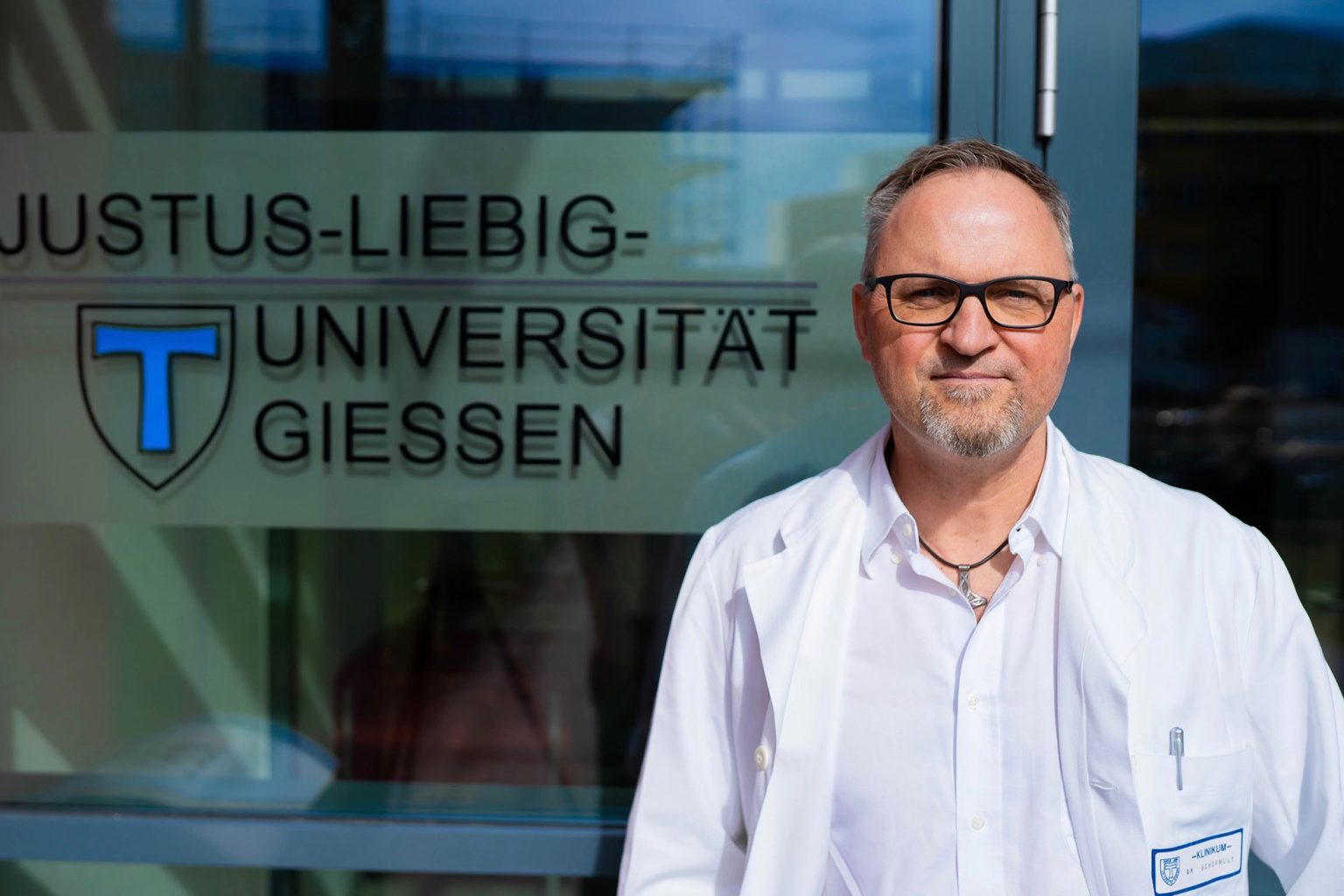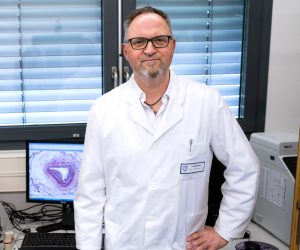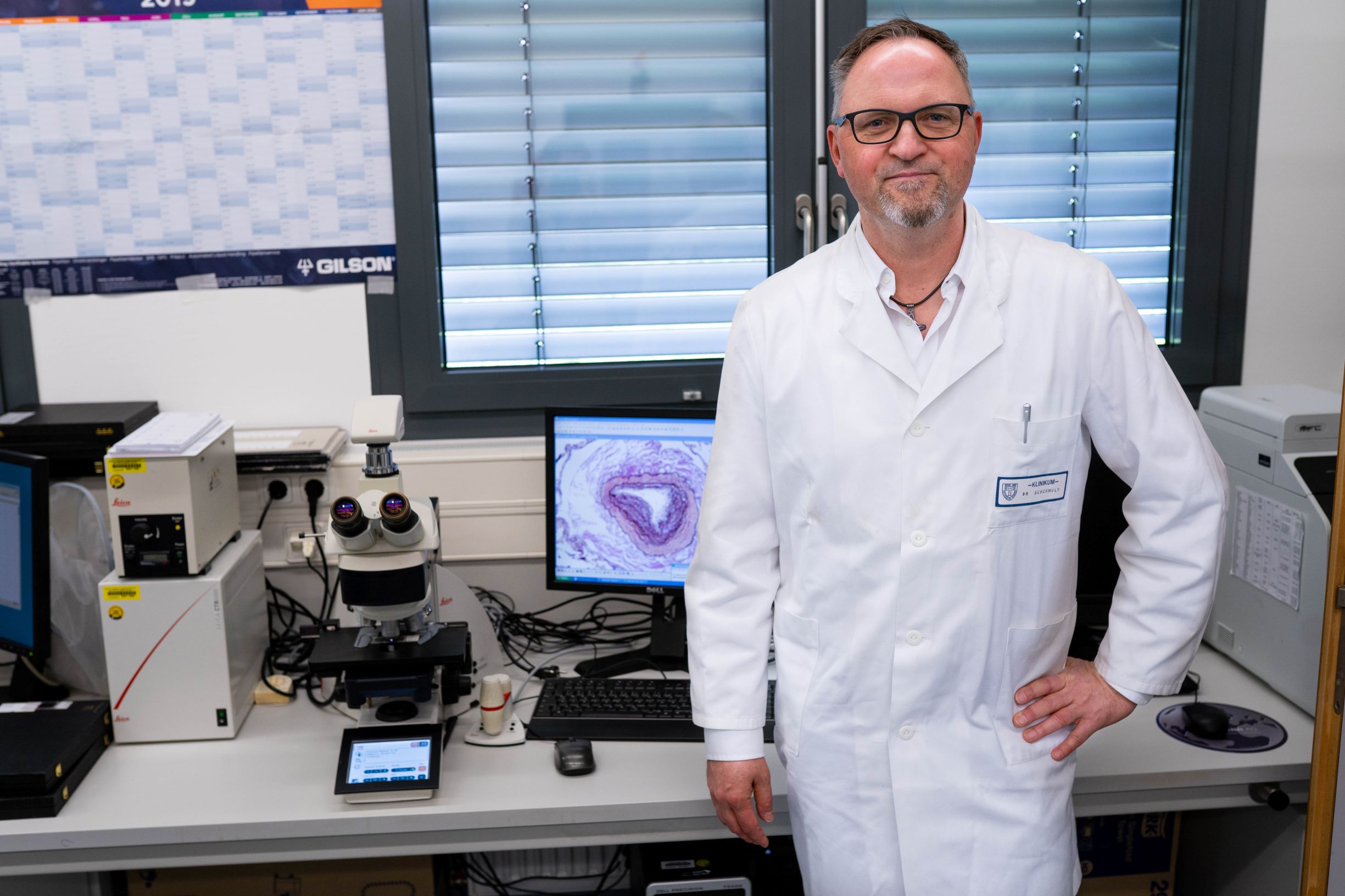Prof. Dr. Ralph Schermuly is an expert in the field of experimental pathophysiology and pulmonary hypertension. In 2011 he took over the chair of Pulmonary Pharmacotherapy at the Justus Liebig University of Giessen, Germany. Since then, he and his team have been conducting research on causes and disease mechanisms to better understand the factors and triggers of pulmonary hypertension.

What exactly is pulmonary hypertension, and why is it so difficult to identify diagnostically?
Prof. Schermuly: Pulmonary hypertension is a disease of the pulmonary vessels. In a healthy lung, the pulmonary vessels have very thin walls. But in this disease, these vessels change, and the vessel walls thicken enormously. The blood, therefore, runs with increased resistance, putting considerable strain on the heart. As a result, the patients initially suffer from severe shortness of breath. This means the way one could walk, climb stairs or go shopping will become increasingly difficult or even impossible, depending on the severity of the disease. So we are really dealing with a prognosis that is only known from various forms of cancer and is associated with a high mortality rate.
The disease is not measurable or visible from the outside, and that is what makes it so difficult to diagnose. Only imaging methods, such as computer tomography or echocardiography, provide reliable proof of which ventricle is enlarged. The pressure in the lungs can only be measured by means of a neck catheter, which is inserted via the vein through the right side of the heart into the pulmonary circulation. This is a very serious procedure. You need a lot of experience, and this is only done in specialized centers like the one we have here in Giessen.
What triggers this disease?
Prof. Schermuly: Pulmonary hypertension can be triggered by many different factors. But in principle it can be said that infections, hypoxia – that is, lack of oxygen – and also genetic influences can trigger changes in this fine balance of vasodilating substances such as prostacyclin and nitric oxide. This initiates a remodelling process of the cells of the inner vessel wall, which then thicken, causing the vessel volume to become smaller and smaller; that is, the vessel narrows. In some patients we do not find any trigger for this disease. We call this form idiopathic pulmonary hypertension. This is, of course, particularly frustrating for those affected.
What medications help to treat Pulmonary Hypertension?
Prof. Schermuly: Until a few years ago there was hardly any treatment for this disease. During my doctoral thesis, doctors could only give non-specific vasodilator drugs and basically watch the patient die. The mean survival time in the 1990s was about 3.5 years. A lot has changed since then. In our lung center here in Giessen, Germany, we are investigating the function and mode of action of specific substance classes that play a key role in the central signaling pathway of blood pressure regulation. These include drugs that can be inhaled, such as prostacyclin analogues. They therefore act directly in the lungs and dilate the blood vessels. Orally administered substances, such as Phosphodiesterase PDE 5 inhibitors, Endothelin receptor blockers or soluble guanylate cyclase stimulators act directly in the pulmonary tract and thus lead to vasodilation. These can be administered individually or in combination. In this way, we have succeeded in extending the mean survival time of patients to about eight years. This is a clear step forward and a much better prognosis for patients.

Prof. Schermuly on the status of research:
Recently, together with our partner research group from Lhasa, we conducted a large-scale study involving several thousand patients. It is extremely complex to sequence the complete genome of the patients. We already have first hints which genes offer exciting targets for drugs. I believe we will be able to report spectacular results in the future.
What projects are you currently pushing forward in your research group?
Prof. Schermuly: Of particular interest is the aspect of hypoxia – a lack of oxygen in the blood vessels. Pulmonary hypertension can also occur as a result of too little oxygen. Conversely, however, this means that we all develop pulmonary hypertension at an altitude of 3,000 meters, depending on how long we stay at that altitude. We want to understand why some people can live at high altitudes and do not develop this disease, while others immediately develop pulmonary hypertension. For this reason we have been working with the Universities of Lhasa in Tibet and Bishkek in Kyrgyzstan for many years. We suspect that genetic factors are also involved in the development of this disease. If we understand why and which genes are responsible, we can learn how to treat our patients here so that this disease is suppressed or does not break out in the first place. To better understand this, we have developed a specific hypoxia mouse model. Here we can test first substances for their efficacy or identify specific genes that are relevant for the disease. This is an important aspect of translational medicine in that imaging techniques and cell and molecular biology studies in animal models can then be applied to humans. The results in the mouse model should, of course, also have clinical relevance. Therefore, we work together with large transplant centers to isolate cells from human lung tissue. Here, we learn about other important relationships in order to gain a better understanding of this disease.
As an addition to this interview, you can also read this article.

